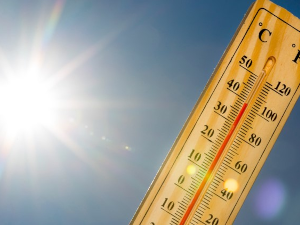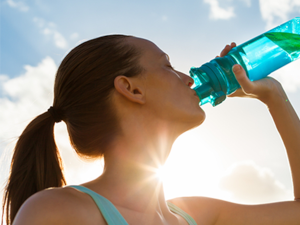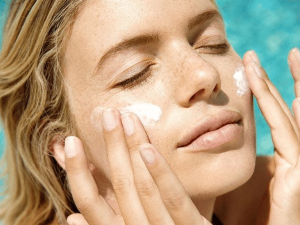Summer Workdays
While many other volunteer sites take a hiatus in the summer, we do no such thing at Oakhurst. As the all-too-prevalent teasel flowered in July and August, it kept us busy during the hottest months of the year.

Stay Cool
Working out in the sun when the temperatures are 80 degrees or higher present a danger of heat exhaustion. When your body starts to overheat, it begins to take measures to lower its core temperature. First you begin to sweat. In order for water to evaporate and become a vapor, it requires energy, and this comes in the form heat from your body. The evaporation of sweat cools your body down by removing heat. Second, you begin to look flushed. In this case, the blood vessels near the skin dilate allowing more blood to flow to the surface, and thus increasing the amount of heat lost to the environment.
During the summer we will often start workdays an hour early at 8am to avoid the worst of the heat, or cut short a workday when it begins to become uncomfortable. Pace yourself, and take as many breaks as your need, ideally in the shade.

Hydration
When you sweat as a mean of heat dloss, it means you are losing water and salt which are critical to your body. At minimum this can lead to dehydration, at worse, heat exhaustion or heat stroke. It is therefore important that you drink plenty of water throughout a workday to replace what you have lost. For me, this now means a 64 ounce bottle of lemonade spiked with a half teaspoon of table salt.
There have been enough times when I have drank plenty of water, yet still have a mild headache after a workday, a sure sign of dehydration. I attribute this to the loss of sodium, which the primary salt found in sweat. So I switched to a lemonade, which will help mask the taste of the added salt.

Sunscreen
When spending any time underneath the great nuclear fusion reactor we call the sun, it is wise to wear sunscreen to protect you from ultraviolet rays. I say wise, because I rarely do this myself and have suffered accordingly. Ultraviolet light is an ionizing radiation, meaning it can strip electrons from molecules, and cause harm to your cells and DNA. In the short term this can result is a sunburn, and in the long term cancer.
UV light comes in three flavors: UVA is the most common in sunlight, has the lowest energy, and causes the wrinkles that give your face character. UVB is higher energy, and causes sunburn. UVC is the highest energy, but is thankfully removed by the ozone layer. The ozone is the only reason you are walking on the surface on the planet today.
Historically, sunscreens were designed to protect you from the UVB, as the goal was to prevent sunburn while you work on that tan at the beach. SPF, or sun protection factor, was a measurement of how much of the UVB was absorbed. A SPF 30 sunscreen blocks 97% of the rays, while SPF 50 blocks 98% of UVB. What SPF does not measure is protection against UVA.
As both UVA and UVB can lead to cancer, it is important to select a sunscreen that is labelled as broad spectrum and with an SPF of at least 30. When applying to the skin, don't be afraid to use a big fat dollop; a liberal amount of a SPF-15 sunscreen offers more protection than a thin layer of SPF-50.
Sunscreens protect you in one of two ways:
- mineral sunscreens, which contain zinc oxide or titanium dioxide, form a physical barrier that sits on top of the skin and reflects the harmful rays away
- chemical sunscreens, on the other hand, are absorbed into the skin where they absorb the UV rays and convert it to heat.
It goes without saying that any suncreen with dreaded chemicals is going to face scrutiny by the public, and lamented as harmful by those wishing to sell you an alternative natural solution. Hawaii has banned some ingredients out concern for its coral reefs, but with increasing levels of CO2 being the primary threat, that like blowing out a candle in a house already on fire.

 Volunteering
Volunteering Safety
Safety Wildlife
Wildlife Newsletter
Newsletter